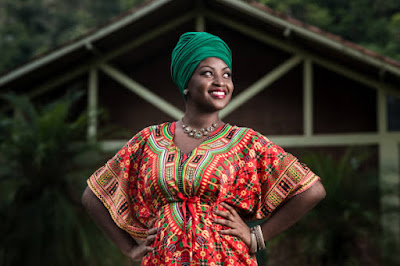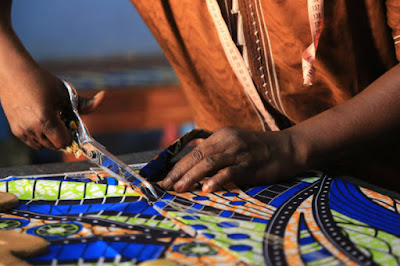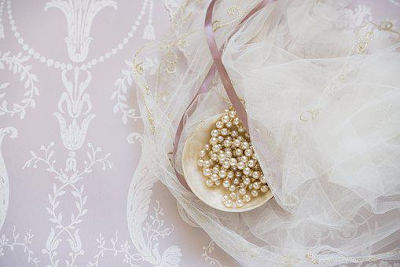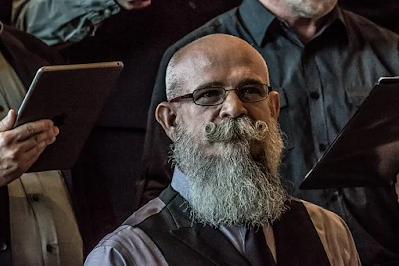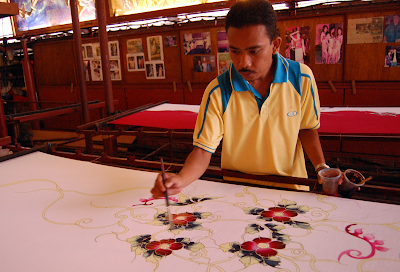Featured
- Get link
- X
- Other Apps
AFROCENTRIC DRESSING AND FASHION.
Afrocentricity.
An Afrocentric perspective refers to African history and applies it to every artistic, social, and political action.
The word "negritude" was used in the 1940s by Aimé Césaire and Léopold Sédar Senghor, president of Senegal and poet, to express the effects of Western colonialism on black people without referring to their culture, language, or location.
The Atlantic slave trade, which began in the fourteenth century and lasted for 400 years, was the most notable example of colonization.
However, it is arguable that the results of colonialism have left Africa economically and culturally destitute.
For the descendants of slaves residing in Western nations, Atlantic slavery had resulted in discrimination and intolerance based on their physical differences from the indigenous people.
These ideas are at the heart of Aimé Césaire and Léopold Sédar Senghor's concept of negritude being defined by a black person's bodily condition, which is blackness.
When Cheikh Anta Diop (1974) asserted that ancient and contemporary Africans have comparable physical looks and other genetic traits, as well as cultural patterns and linguistic systems, Afrocentrism gained traction.
This understanding has been exploited by Diop and others to promote the concept of ancient Egypt (Kemet) as a black civilization and a point of reference for current Africans.
Frantz Fanon (1967) used the word "negritude" to describe the prevalence of black psychological disorders that impeded black people's freedom within Western modernity, as well as how colonialism affects all black people.
Fashion gives a visual background to the connection between mask and identity, image and identification, which is an example of black psychological disorder in self-expression.
In the African context, fashion has a specific purpose: it allows black people to achieve status positions that are outside of their normal routine.
When constructing their fashioned self-image, blacks use some of the visual instruments of their enslavement and liberation.
Fanon paints a picture of a black Caribbean immigrant to the United States after fleeing his motherland.
The bandanna and straw hat represent a way of life that he leaves behind.
Once in the West, the guy adopts a posture that is influenced by his discomfort with being in the West, as well as the fact that he is wearing Western clothing.
In Fanon's scathing indictment, black people in the West have just two options: either stand with the white civilization or reject it.
The idea of negritude contributes to Afrocentrism's philosophical foundation.
Afrocentric Fashion As Self-Expression.
The way black people utilize clothing in their personal representations of themselves might vary depending on location and viewpoint.
Fashion that is afrocentric is similar to fashion that is Western.
Both borrow heavily from oppositional fashion statements, resulting in fragmented and always unfinished expressions.
Afrocentrists are adamantly opposed to the notion that Afrocentricism is affected by or contains elements of Western culture, despite the fact that Afrocentric fashion is less absolute than other expressive forms like music and painting.
Diverse elements in Africa and the African diaspora may be brought together through the adoption of Afrocentric clothing.
Visualizations of Afrocentric attire are based on Kemet, and hence are mimetic in nature since they depend on the concept of an old African self and its accompanying gestures, which are, of course, an aberration caused by the sickness that Fanon spoke to.
Afrocentricism became essential and often crucial to the fashion manifestations of black people living in America, the Caribbean, and the United Kingdom during the period of the 1960s American civil rights movement.
Afrocentric clothing does not usually include exquisite linen gowns, kilts, collars, or the use of kohl on the eyelids; nevertheless, it does include apparel themes and long-established fabrics, manufacturing, and cutting processes from the rest of Africa.
Afrocentric design draws on the clothing traditions of multicultural Africa, including those of both colonizers and colonized peoples.
The former is shown by the tale of batik (an Indonesian textile).
For Afrocentrists, Afrocentric clothing is the norm; as a result, Western clothing is "ethnic" and hence "exotic." As a result, Afrocentric clothing has evolved into a masterful embodiment of African diaspora culture.
For its visual symbolism, political and cultural activities such as black cultural nationalism have embraced Afrocentric fashion.
Wearing African and African-inspired clothing, such as the dashiki, Abacos (Mao-styled suit), Kanga, caftan, wraps, and Buba, expresses African and black identity and black nationalism.
All of these things are black diaspora cultural objects that are worn alone or in combination with Western clothing.
These outfits imply a sense of discord.
Combining Afrocentric and Western styles in a single garment or ensemble is a direct challenge to Western fashion, especially if the apparel does not convey an Afrocentric leitmotiv or theme at the same time.
Afrocentric garment incorporates a variety of fabrics into its design.
Ghanaian kente fabric, batik, mud cloth, indigo cloth, and bark cloth are used to a lesser degree.
Dashikis, Abacos, Kangas, caftans, wraps, and Saki robes are all fashioned of kente, batik, and mud cloth, but they may also be found in simple cottons, polyesters, and sparkly novelty fabrics with tiger, leopard, and zebra designs.
The West African Buba, a voluminous floor-length robe that is typically embroidered at the neckline and worn by both men and women, is a less popular garment that does not integrate well in daily life.
Skullcaps, kofis, turbans, and Egyptian and Ghanaian-inspired jewelry, among other things, are worn alongside other Afrocentric goods or independently with Western products.
Ties, handbags, graduation cowls, and pocket-handkerchiefs fashioned of afrocentric materials have a unique importance among the middle-class African diaspora.
Has Anyone Worn Afrocentric Clothing?
Outside of Africa, the most prominent manifestation of Afrocentricity occurred in the United States throughout the 1960s and 1970s.
Clothing served as a mix of protest and self-affirmation for the Black Panthers and other black nationalist and civil rights organizations.
Men's berets, knitted tams, black leather jackets, black turtleneck sweaters, Converse shoes, and Afrocentric products such as dashikis, different kinds of Afro hairstyles, and to a lesser degree Nehru jackets, caftans, and djellabas for men were among the prototype items.
Tight black turtleneck sweaters, leather pants, dark sunglasses, Yoruba-style head wraps, batik wrap skirts, and African-inspired jewelry were popular among women.
The latter things were Afrocentric for both men and women, but the former were assimilated into Afrocentricity because the constituency wore and popularized them, making them emblematic of black resistance.
The Grandassa Models were featured in a fashion and culture display put on by Kwame Brathwaite and the African Jazz-Art Society and Studios in Harlem in 1962.
The performance became a yearly tradition.
The goal was to investigate the notion that "black is attractive." It did so by using dark-skinned models with kinky hair who wore African materials made into forms reminiscent of traditional African attire.
This event provided the impetus for the popularity of Afrocentric fashion in America.
As opposed to cut-and-sewn clothes, the Grandassa Models explored the possibilities of kente, mud cloth, batik, tie-dye, and indigo fabrics, as well as different options of wrapping material.
Following that, performers including Nina Simone, Aretha Franklin, the Voices of East Harlem, and Stevie Wonder donned part or complete Afrocentric attire on occasion.
Afrocentric fashion was particularly popular in the 1960s and 1970s in America, the Caribbean, and the United Kingdom.
The most popular Afrocentric fashion pieces were turbans, dashikis, huge hooped earrings, and cowrie shell jewelry.
Jamaican Rastafarians, like the Black Panthers, dress in "essentialized" fashion.
Rastafarianism's spiritual, aesthetic, and cultural qualities, on the other hand, are imbued in a variety of clothing items.
Rastafarianism's material culture is inextricably related to cultural resistance, as seen by military combat trousers, war coats, and berets.
Dreadlocks, the red, green, and gold Ethiopian flag, and the image of the Lion of Judah, which represents strength and dread, were introduced in the 1970s and provided Rastafarians with a sense of identity that is further supported and symbolized by dreadlocks, the red, green, and gold Ethiopian flag, and the image of the Lion of Judah, which represents strength and dread.
Jamaican Dancehall, a music-driven subculture that began in the 1950s with picnics and tea dances, has a diverse range of fashion themes.
The African theme is a popular one.
The baggy "Click Suits" worn by males in the mid-1990s were inspired on the African Buba top and Sokoto trousers.
African clothing is ubiquitous in Dancehall fashion.
Women's outfits were molded into dissonant Western designs, featuring loose layered garments in brilliant and often flamboyant colors; translucent, plastic, or flexible materials; and embellishments such as beading, fringing, or rickrack.
The 1990s dancehall clothing represented sexuality, self-determination, and independence.
Wearers eschewed comfortable and functional apparel in favor of garb that emphasized excess.
Wearers of Afrocentric clothing set themselves apart and promote "Africanness" in the Western world.
Adopting Afrocentric clothes is a technique of erasing the profound psychological chasm between geographical past and current present described by psychiatrist Frantz Fanon in Black Skin, White Masks (1967).
Afrocentric clothing may also be seen in the Caribbean, the United States, and the United Kingdom's black music cultures.
B-boys and girls, Flyboys and girls, Dancehall Kings and Queens, Daisy Agers, Rastafarians, Neo-Panthers, Funki Dreds, and Junglist all incorporated Afrocenticity into their fashion choices in the early 2000s.
Afrocentric fashion incorporates a mix of everyday clothing items that signify disharmony with prominent elements from Africa's ancient past and present.
Find Jai on Twitter | LinkedIn | Instagram
See also:
African American Dress; Batik; Boubou; Dashiki; Kente.
References And Further Reading:
Diop, Cheikh Anta. The African Origin of Civilization: Myth or Reality. New York: Lawrence Hill and Company, 1974.
Fanon, Frantz. Black Skin, White Masks. New York: Grove Press, 1967.
Vaillant, Janet G. Black, French, and African: A Life of Leopold Sedar Senghor. Cambridge, Mass.: Harvard University Press, 1990.
- Get link
- X
- Other Apps

